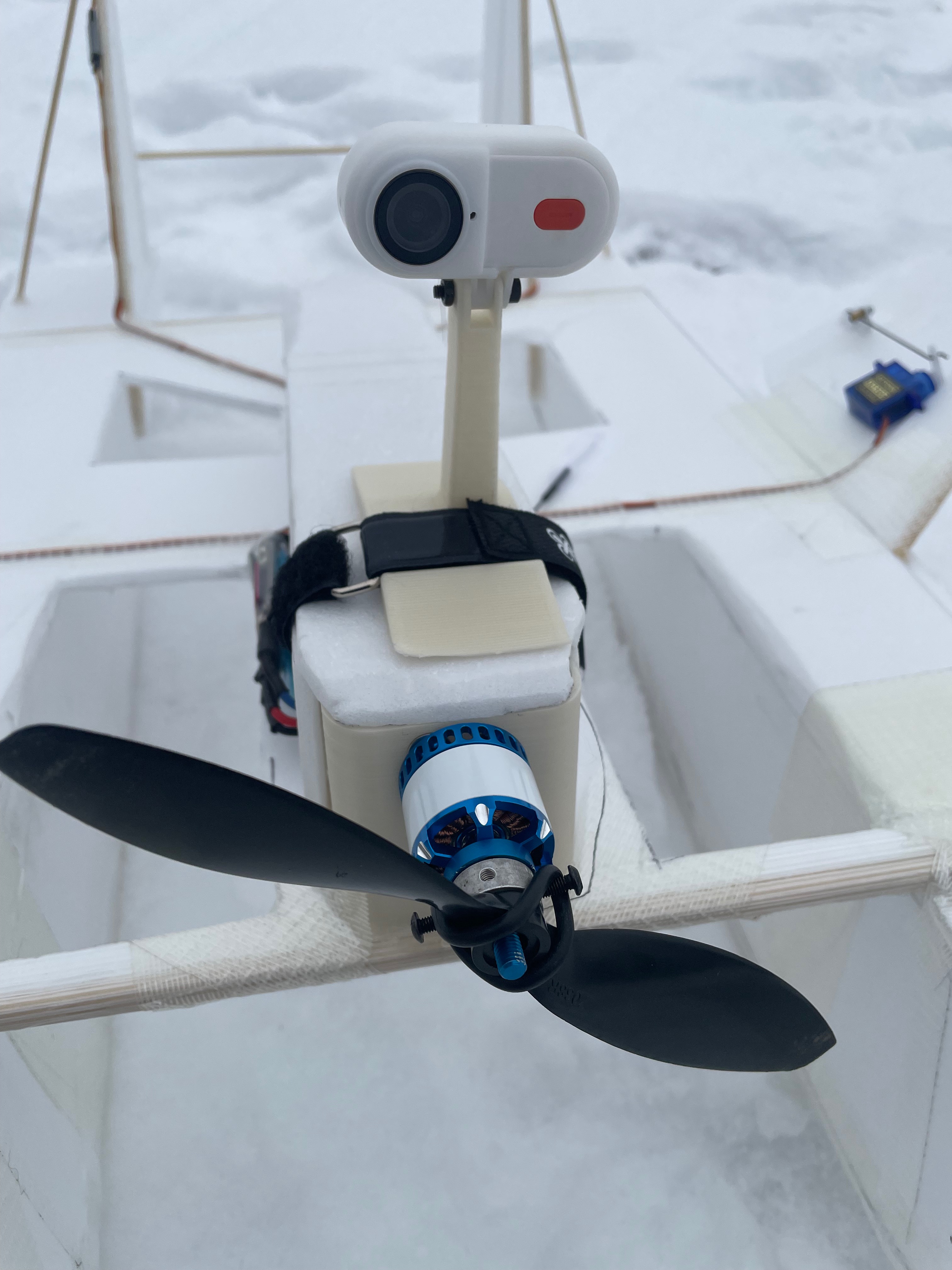This winter I gave myself a challenge: build an RC car using RC plane parts. My first take was the Flying Fish, merging the snow nutball with the snow skimmer. The idea was to give it just barely enough lift for it to leap over any obstacles in its path. After several improvements, I'm really happy with how it turned out! In fact, I found myself seeking out bumps in the snow to play with its jumping capabilities.
For those fortunate enough to have snowy winters, these ground vehicles are great for DIY builds, as they allow so much creativity. Building new designs of DIY planes is great, but they certainly are at risk of a major crash if things aren't just right! With a snow skimmer, the combination of being close to the ground and soft snow give you plenty of chances to tweak the design when things aren't working. For example: how often is your plane completely unharmed after crashing straight into the ground?

After an early run in which the skimmer spent too much time in the air, I cut out much of the deck of the pontoon to reduce lift. I installed a Cadex Peanut to capture video from an onboard perspective. The camera's "pro mode" automatically stabilizes the images for a smooth viewing experience.
The Details: Flying Fish is 28" long and 15" wide. Each of the pontoon skis are 3" wide, up to 4" tall and tapering down to 1" tall in the back. The skis are made from 5mm MPF foam board, hot glue, wooden dowels and increasing amounts of tape. After numerous hot glue and duct tape repairs the skimmer weighs 600g (w/o battery). Electronics include a 3c cell 2200mAh lipo (mounted fully forward in the bay), a SunnySki x2212 motor with a 7x3.8" prop. I initially had the motor angled up 6 degrees, but found it works best when shimmed to neutral.
Ski Surface: The surface of each ski should be slick and uniform side to side. First I used packing tape. This initially worked well but tended to lose adhesion after exposure to snow, and tore easily from protruding sticks, etc. Iron-on laminate "new stuff" worked better, but eventually also tore and lost adhesion. So far, white duct tape has worked best. If you noticed in the video that I am only turning left (like NASCAR), that was due to the left ski surface being torn up a bit, creating extra drag and making a right turns almost impossible. It's important to have each ski surface the same!
Further Thoughts: While it works well overall, the Flying Fish's weak spots are turning (in soft snow) and durability. I tried increasing the length of the rudders; while this certainly helped, it still turns wide in softer snow. The overall width seems to be about right in balancing stability and tracking. The Flying Fish occasionally flips over during turning, especially when there is a cross wind. Skimming over rough/icy snow and taking jumps resulted in frequent hot glue and duct tape repairs to the deck-pontoon and rudders-elevator joints. On a future build, I would love to try adding some type of ski suspension, durable joints, and a fiberglass ski surface. I might also experimenting with rounding the edges of the skis to facilitate turning. This model has dual ailerons, elevator and dual rudders. The ailerons help to stabilize after jumping off at an angle and during turning, but are not required. The dihedral winglets provide lift and help to stabilize the skimmer in the air; I am curious about what happens when these are removed. The elevator is needed to initiate leaps and to control pitch coming off jumps, but is optional on totally flat snow. The rudder is required, however, and could be considerably larger.










No Comments Yet
Be the first to leave one!